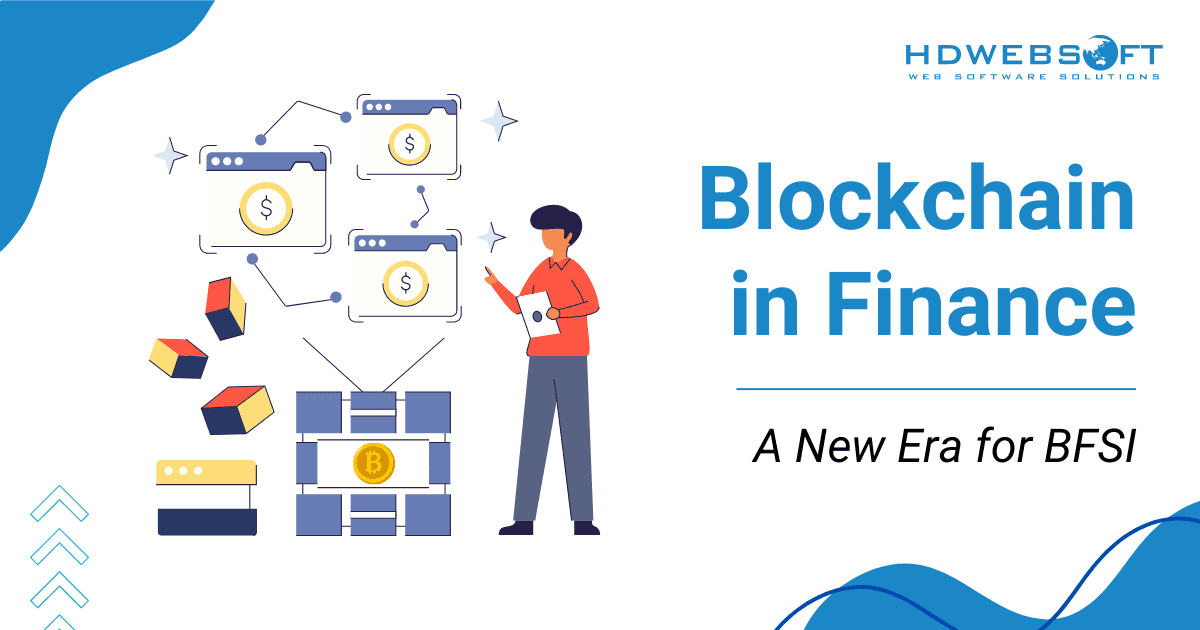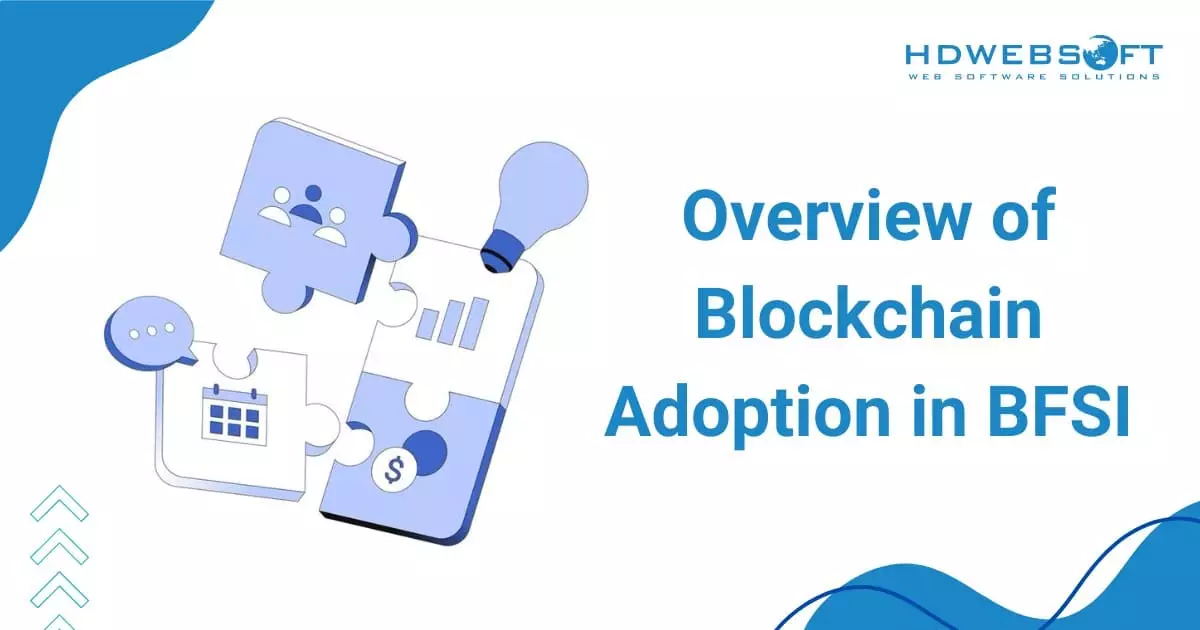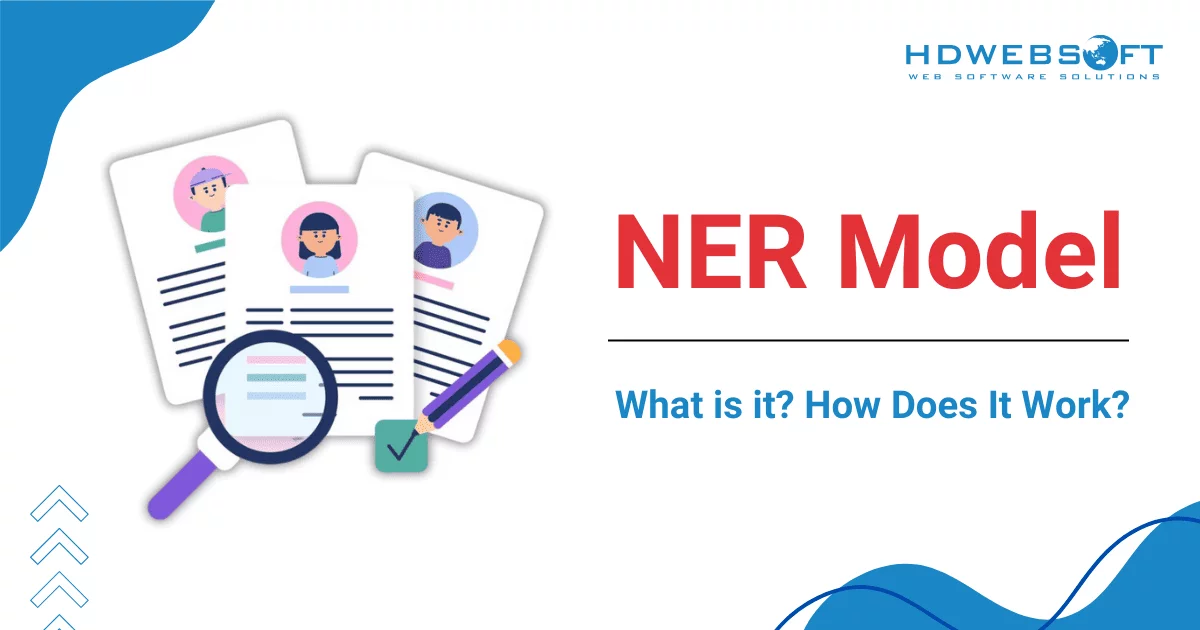
Blockchain in Finance: A New Era for BFSI
Blockchain in finance has evolved far beyond its original purpose as the backbone of cryptocurrency transactions. Today, the financial services industry is embracing blockchain for its potential to increase transparency, reduce fraud, and streamline complex processes. As more banks, financial institutions, and regulators explore its capabilities, blockchain is becoming crucial in reshaping the financial world’s operations.
This blog delves into what blockchain is, its adoption in the BFSI sector, and its real-world use cases. Additionally, we will dive into both the opportunities and challenges that blockchain in BFSI entails.
What is Blockchain?

At its core, blockchain is a decentralized and distributed digital ledger technology (DLT). It works by recording transactions across multiple computers, ensuring security, transparency, and immutability.
Unlike centralized systems, where data is controlled by a single entity, blockchain operates on a peer-to-peer network. Within this system, each participant (or node) maintains a copy of the ledger, ensuring consistency and trust across the network.
Furthermore, transactions are grouped in blocks. Each block is cryptographically linked to the previous one, creating a chain of records.
Blockchain in finance benefits from the system’s decentralized nature, which makes it resistant to tampering and fraud. This is because changes to a single record require consensus from a majority of participants.
In addition, this technology offers a way to improve transparency, reduce transaction costs, and minimize the time needed for cross-border payments.
Overview of Blockchain Adoption in BFSI

The adoption of blockchain in finance has accelerated, driven by the need for greater efficiency, security, and transparency in financial operations. A recent study estimates that blockchain in the banking sector will grow with a CAGR of 83.10% from 2024 to 2031, highlighting the significant interest and investment in this technology. Financial institutions are exploring blockchain to streamline processes like cross-border payments, trade finance, and customer identity verification.
Another report found that 91% of financial services companies actively invested in blockchain solutions. While the BFSI sector was initially hesitant due to concerns about regulatory challenges and scalability, the technology has gained momentum. This is due to its ability to reduce costs, eliminate intermediaries, and accelerate transaction times.
What are the Benefits of Blockchain in Finance?
This revolutionary technology offers many benefits, ranging from enhanced security to improved efficiency. Here are the key benefits of blockchain technology in the financial sector:
Enhanced Transparency and Trust
One of the most significant benefits of blockchain in finance is its ability to provide transparent and immutable transaction records. Since the blockchain operates as a decentralized ledger, every participant has access to the same data. This reduces the possibility of discrepancies or fraud.
Each transaction is timestamped and permanently recorded on the blockchain. As a result, it provides a clear audit trail that you can trace back without needing intermediaries.
This transparency fosters greater trust among financial institutions, businesses, and consumers. Moreover, it eliminates the need for third-party verifications, as multiple nodes on the network verify every transaction. Consequently, this not only improves trust but also streamlines processes and reduces delays in transaction settlements.
Increased Security and Fraud Reduction
The cryptographic principles underlying finance blockchain provide robust security for financial transactions. Blockchain’s decentralized nature ensures that data is stored across multiple nodes, making it nearly impossible for a single entity to alter or hack the system.
Accordingly, this security measure drastically reduces the risk of fraud and cyberattacks, which are prevalent in traditional financial systems. For example, by eliminating a central point of control, blockchain prevents malicious actors from accessing sensitive financial information.

Blockchain in finance assists in reducing security risks and cyberattacks.
Additionally, blockchain in finance’s consensus mechanisms validate all transactions before adding them to the ledger. This process safeguards against unauthorized changes and ensures that only legitimate transactions get recorded, maintaining the system’s integrity.
Cost Efficiency and Reduced Transaction Costs
Traditional financial systems often involve multiple intermediaries, such as banks and clearinghouses, which add complexity and cost to transactions. With blockchain finance, intermediaries are no longer necessary, as blockchain technology enables direct peer-to-peer transactions. Inevitably, this significantly reduces transaction fees, especially in cross-border payments where traditional methods can be slow and expensive.
Moreover, the integration of banking AI with blockchain technology can further optimize these processes, enabling real-time fraud detection, personalized customer experiences, and more efficient risk management.
Furthermore, blockchain’s automation capabilities also help reduce operational costs by eliminating manual processes. For instance, smart contracts automatically execute agreements when they meet pre-defined conditions. Ultimately, they eliminate human intervention and cut administrative overhead, streamlining processes while reducing errors and delays.
Faster Transaction Settlement
One of the most frustrating aspects of traditional finance is the time it takes to settle transactions, particularly in cross-border payments, where transactions can take days to process. Blockchain in finance offers a solution that enables the near-instant settlement of transactions.
Since transactions are verified in real-time on the blockchain, there is no need to wait for third-party approval or clearinghouses. This real-time verification allows payments to be completed in minutes or seconds, significantly accelerating transaction times and enhancing overall efficiency.
This is particularly beneficial for industries like remittances, trade finance, and securities trading. In these sectors, faster transaction times lead to improved liquidity and reduced operational bottlenecks. Consequently, the adoption of blockchain will enhance overall efficiency and performance.
Improved Compliance and Regulatory Reporting
Compliance is a critical issue in the financial sector, and blockchain for finance can help streamline this process. By offering an immutable and transparent record of all transactions, blockchain makes it easier for financial institutions to meet regulatory requirements. Hence, auditors and regulators can access the blockchain to verify compliance without relying on paper trails or manual reconciliation processes.
Moreover, developers can program smart contracts to enforce compliance with regulatory standards, reducing the risk of human error and non-compliance.

Blockchain simplifies the process for financial institutions to comply with regulatory requirements.
Decentralization and Peer-to-Peer Transactions
Decentralization is a cornerstone of blockchain in finance. Traditional financial systems rely on centralized institutions like banks and governments to process transactions and maintain ledgers. In contrast, blockchain operates on a decentralized network, where each participant has a copy of the ledger and plays a role in validating transactions.
This decentralization opens the door for more inclusive financial systems, particularly in underbanked regions with limited access to traditional banking. Additionally, blockchain enables individuals to participate in financial markets without needing a bank account, fostering greater financial inclusion.
Blockchain use cases in BFSI
The application of blockchain in finance is transforming the BFSI sector, leading to operations, security, and efficiency innovations. We explore some key use cases of blockchain within the BFSI industry, highlighting how this new technology in banking modernizes traditional financial practices:
Cross-Border Payments
One of the most promising use cases of blockchain for finance is in cross-border payments. Traditionally, this area is plagued by high costs, slow transaction times, and complex intermediary processes.
However, blockchain eliminates the need for third-party intermediaries such as correspondent banks, thereby reducing transaction fees and settlement times. Furthermore, the technology enables peer-to-peer (P2P) transfers across borders, allowing for almost instant, secure, and cost-effective transactions.

Blockchain in finance offers nearly immediate, secure, and cost-efficient transactions.
Several blockchain-based payment solutions, such as Ripple and Stellar, are already being used by financial institutions to process international payments. Understandably, this use case has revolutionized the remittance industry, where millions of workers transfer funds to their families abroad. With blockchain, transaction times are reduced from days to seconds, significantly improving liquidity and financial inclusion.
Trade Finance
Trade finance is another area where blockchain in finance is making a significant impact. In traditional trade finance, the process involves multiple parties, including buyers, sellers, banks, and insurers, leading to delays and inefficiencies due to manual paperwork and reconciliation. However, blockchain streamlines this process by digitizing and automating the entire trade finance workflow, reducing delays and improving efficiency.
With blockchain, all participants in a trade transaction access the same shared ledger, which tracks goods and payments in real-time. This transparency reduces the fraud risk, eliminates the need for multiple layers of verification, and speeds up the settlement process. In response, companies like IBM and Maersk have launched blockchain-based trade platforms such as TradeLens to make global trade more efficient and secure.
Smart Contracts for Insurance Claims
In insurance technology, finance blockchain is used to automate and streamline claim processes through the use of smart contracts. A smart contract is a self-executing contract where the terms are written directly into code. Once the conditions of the contract are met, the agreement automatically executes, reducing the need for manual intervention and decreasing the risk of fraud.
For example, an insurance company could use a smart contract to release a payout when a specific event occurs automatically. This automation reduces insurers’ administrative burden and ensures quicker processing of customer claims. Likewise, the automation and transparency offered by smart contracts lead to better customer satisfaction and reduced operational costs for insurers.

In insurance, finance blockchain automates claims with smart contracts, cutting manual work and fraud risk.
Securities Trading and Settlement
Blockchain in finance has the potential to revolutionize securities trading by enabling real-time settlement of trades. In traditional securities trading, it can take up to several days for trades to settle due to the involvement of intermediaries like clearinghouses and custodians. Meanwhile, finance blockchain enables direct peer-to-peer trading, where transactions are settled almost instantly.
Resultantly, it reduces counterparty risk, enhances liquidity, and minimizes the operational costs associated with clearing and settlement. Several financial institutions and stock exchanges, such as the Australian Securities Exchange (ASX), are exploring blockchain solutions. They aim to facilitate faster and more secure securities trading through the use of this innovative technology.
Know Your Customer (KYC) and Anti-Money Laundering (AML)
Financial institutions are required to comply with stringent Know Your Customer (KYC) and Anti-Money Laundering (AML) regulations. Traditionally, these processes are time-consuming, expensive, and prone to human error.
However, blockchain in finance provides a solution by creating a secure, decentralized digital identity for customers. It allows institutions to verify customer information more efficiently and with greater accuracy. Additionally, the integration with AI text analysis can help process unstructured customer data, such as documents and communications, to identify risks and improve compliance efforts.
By storing customer identity data on a blockchain, financial institutions can share verified customer information across the network, reducing duplication and improving accuracy. This not only streamlines the KYC/AML process but also reduces compliance costs and enhances data security.
Challenges and Consideration
While the adoption of blockchain for finance is expanding, it is not without its challenges:
Regulatory and Compliance Challenges
One of the primary obstacles for blockchain in finance sector is the lack of a standardized regulatory framework. Since blockchain technology operates decentralized, it challenges traditional legal frameworks for centralized control by banks, governments, and other authorities. Naturally, this shift raises questions about how regulations must adapt to accommodate a system without a central governing entity.
What is more, many countries have yet to define clear regulations for blockchain, which creates challenges for financial institutions. As a result, it is difficult for them to ensure compliance with both national and international standards.
Scalability Issues
Another significant challenge for finance blockchain is scalability. Specifically, public blockchains like Bitcoin and Ethereum often experience slower transaction times and higher fees as the number of users grows. This presents a significant problem for financial services, which require handling thousands of transactions per second, especially during peak times.
Security and Privacy Concerns
While blockchain in finance is inherently secure due to its cryptographic features, there are still risks involved. Smart contracts, for example, may have coding errors or vulnerabilities that can be exploited by hackers.

Security and privacy is a critical issue for the adoption of blockchain in finance.
Additionally, blockchain transactions’ irreversible nature means that any coding or fraudulent activity mistake can lead to significant financial losses.
Moreover, privacy is another key consideration for blockchain for finance technology development. While blockchain offers transparency, this can also lead to concerns about data privacy, as all transactions are visible on ledgers.
Interoperability
Interoperability, or the ability of different blockchain systems to communicate with each other, is still a challenge. Financial institutions often work with multiple systems and platforms, which complicates the integration of blockchain technology. Ensuring that different blockchains can interact frictionlessly is critical for smooth operations and efficient data flow across various financial systems.
Currently, a lack of standardization across blockchain platforms hinders the adoption of blockchain in the broader financial ecosystem.
Conclusion
The growing adoption of blockchain in finance is transforming the financial services industry, enabling more efficient, secure, and transparent transactions. With the rapid growth of blockchain, the financial landscape is becoming increasingly decentralized, offering opportunities and challenges for the future.
As the technology matures, its impact on financial services will grow, ushering in a new era of faster, more secure, and transparent banking. Financial institutions that embrace blockchain will likely have a competitive edge as the industry transitions to a more decentralized, digitized future.









